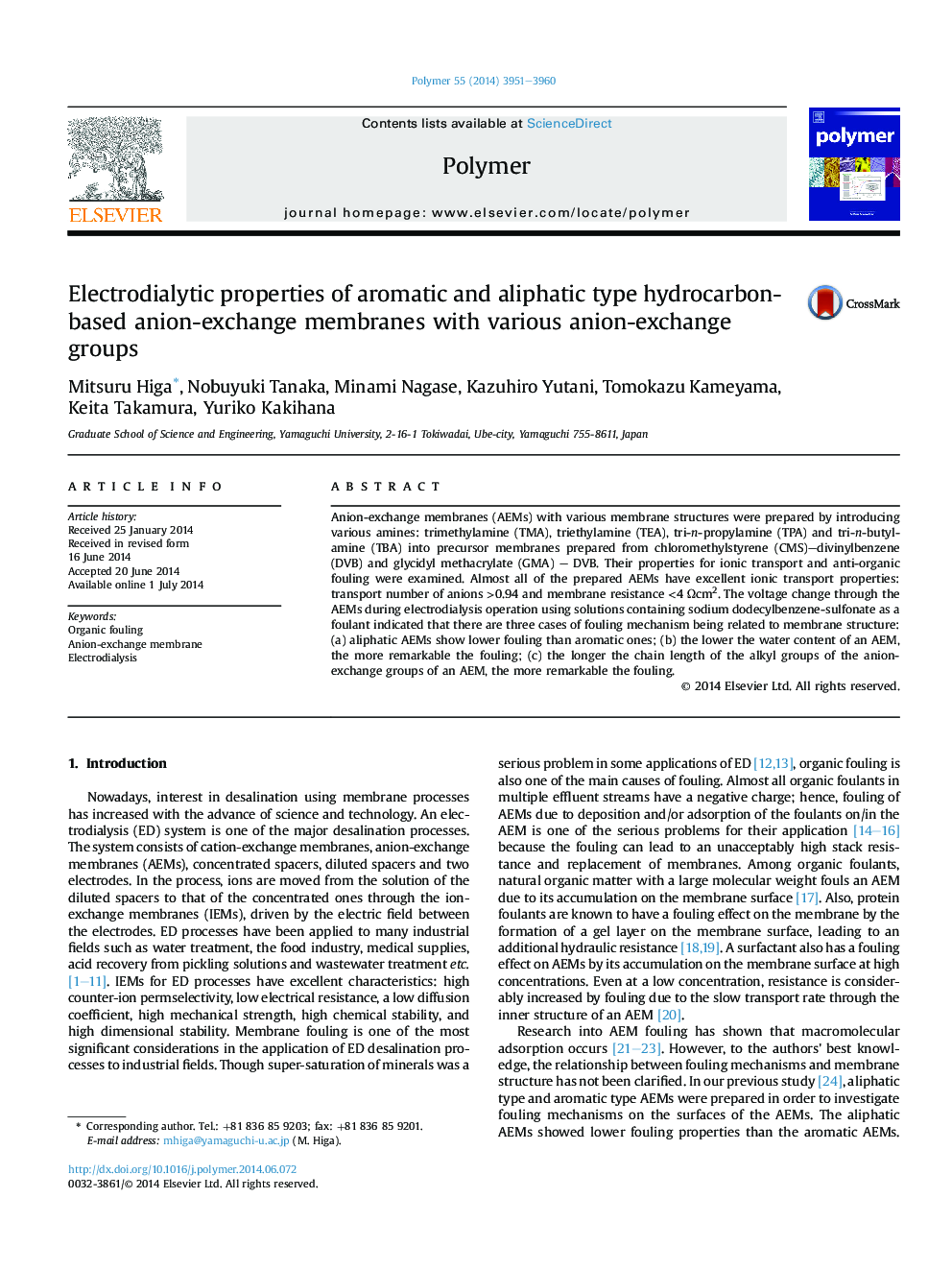| Article ID | Journal | Published Year | Pages | File Type |
|---|---|---|---|---|
| 5181204 | Polymer | 2014 | 10 Pages |
â¢Anion-exchange membranes (AEMs) with various membrane structures were prepared.â¢The prepared aliphatic AEMs show lower fouling than the aromatic ones.â¢An AEM with lower water content shows more remarkable fouling.â¢An AEM with longer chain length of the alkyl groups shows more remarkable fouling.
Anion-exchange membranes (AEMs) with various membrane structures were prepared by introducing various amines: trimethylamine (TMA), triethylamine (TEA), tri-n-propylamine (TPA) and tri-n-butylamine (TBA) into precursor membranes prepared from chloromethylstyrene (CMS)-divinylbenzene (DVB) and glycidyl methacrylate (GMA) - DVB. Their properties for ionic transport and anti-organic fouling were examined. Almost all of the prepared AEMs have excellent ionic transport properties: transport number of anions >0.94 and membrane resistance <4 Ωcm2. The voltage change through the AEMs during electrodialysis operation using solutions containing sodium dodecylbenzene-sulfonate as a foulant indicated that there are three cases of fouling mechanism being related to membrane structure: (a) aliphatic AEMs show lower fouling than aromatic ones; (b) the lower the water content of an AEM, the more remarkable the fouling; (c) the longer the chain length of the alkyl groups of the anion-exchange groups of an AEM, the more remarkable the fouling.
Graphical abstractDownload high-res image (233KB)Download full-size image
